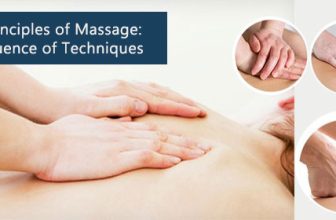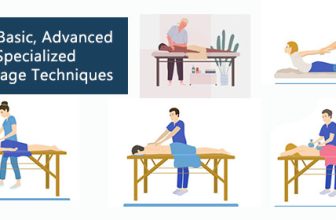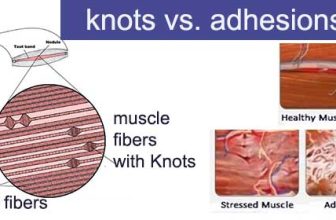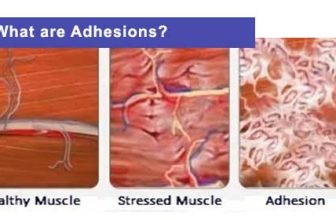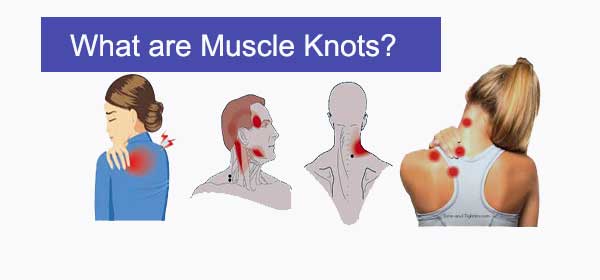
Understanding Muscle Knots
Have you ever experienced that tight, uncomfortable feeling in your muscles that seems to linger no matter what you do? Chances are, you’ve encountered what’s colloquially known as “muscle knots.”
Knots Definition
Muscle knots, often referred to as trigger points in a more clinical setting, are localized areas of tension within a muscle. They are small, tight bundles of muscle fibers that have contracted and formed a palpable knot. While the term “knot” is more colloquial, it accurately captures the sensation of tension, tightness and discomfort.
Causes of Muscle Knots
How do muscle knots form? Understanding the causes of muscle knots can help in preventing and managing them.
Common factors include:
- Overuse or Strain: Repetitive movements or excessive use of specific muscles can lead to the development of knots.
- Poor Posture: Maintaining an improper posture, whether sitting at a desk or standing, can contribute to muscle imbalances and the formation of knots.
- Physical Trauma: Injuries, accidents, or trauma to the muscles can result in the formation of muscle knots
How to Identify Muscle Knots
How do muscle knots feel? Muscle knots often present as small, sensitive areas within a muscle. You might feel at tense, tight spot under the skin or even a lump or bump, and when pressure is applied, it can elicit discomfort or pain.
Muscle knots often present as small, sensitive areas within a muscle. You might feel a lump or tight spot under the skin, and when pressure is applied, it can elicit discomfort or pain. However, one unique characteristic of muscle knots is their ability to refer pain to other areas. This means that the discomfort you feel at the knot’s location might also manifest in a different part of your body.
For example, a knot in the neck or upper back might refer pain to the neck or even down the arm. Similarly, a knot in the lower back could cause discomfort that radiates into the hip or buttock/ gluteal area.
Common areas for muscle knots include the shoulders, neck, upper back, and calves, but muscle knots can occur in any muscle group.
Massage Therapy for Muscle Knots
Massage therapy helps with improved blood flow. Increased blood circulation not only supports muscle recovery but also aids in the removal of metabolic waste products associated with muscle knots. By enhancing blood circulation, massage facilitates the delivery of oxygen and nutrients to muscle tissues, promoting healing.
Massage promotes relaxation, reducing stress hormone levels and creating an environment conducive to healing. Regular massage sessions create heightened awareness of the body, allowing us to recognize early signs of muscle tension and address them proactively.
Massage therapy is an effective way to address muscle knots. Skilled massage therapists use various techniques, including:
-
Deep Tissue Massage for Knots
Deep tissue massage targets the deeper layers of muscle to release tension and break down knots. It involves applying firm pressure and slow strokes to reach the deeper layers of muscle tissue where knots often reside. This method helps break down knots and release tension held deep within the muscle fibers. Sustained pressure also encourages the release of built-up tension, gradually unraveling knots and restoring optimal muscle function.
-
Myofascial Release for Knots
Myofascial release technique focuses on the fascia, the connective tissue surrounding muscles, to alleviate tension and improve flexibility.
Fascia, the connective tissue surrounding muscles, plays a crucial role in maintaining structural integrity. Myofascial release targets fascial restrictions, which can contribute to the formation of knots. By addressing fascial restrictions, myofascial release helps improve flexibility and range of motion. It also contributes to the overall reduction of tension, providing relief not only at the site of the knot but throughout the interconnected fascial network, and the muscles that the fascia surrounds.
-
Trigger Point Therapy for Knots
Trigger point therapy directly addresses and releases muscle knots, providing relief from localized tension. Trigger point massage therapy involves applying pressure to specific trigger points—those tight, irritable knots within muscles. This targeted approach aims to release the tension within the muscle knots, providing relief from both localized discomfort and potential pain referral.
Pinpointing and releasing trigger points not only offer localized pain relief, it also contributes to improved muscle function and reduced muscle imbalances. Trigger point therapy addresses not only the symptoms but also the underlying causes of the muscle knots.
What to do with Muscle Knots (other than Massage Therapy)
In addition to professional massage therapy, incorporating self-care practices can help manage and prevent muscle knots. You can do the following in order to help manage or even release your muscle knots:
A. Stretching:
Stretching not only enhances flexibility but also encourages muscle relaxation, reducing the likelihood of knots.
For individuals with sedentary lifestyles, where prolonged sitting can contribute to muscle tightness and imbalances, incorporating stretching throughout the day is important. For example, integrate simple stretches at your desk. Shoulder rolls, neck stretches, and seated forward bends can alleviate tension and enhance flexibility.
Take short breaks every hour to stand, stretch, and move. Incorporate gentle stretches for the neck, shoulders, and lower back to counteract the effects of prolonged sitting.
Before engaging in physical activities, perform dynamic stretches to warm up muscles and increase blood flow.
B. Maintain Proper Posture
Take proactive steps to maintain proper posture during daily activities, whether sitting at a desk or engaging in repetitive movements. Ergonomic adjustments to your workspace and mindful movement patterns can reduce muscle imbalances and decrease the risk of developing knots.
For example, set reminders to check and correct your posture throughout the day. Ensure that your desk and chair are ergonomically suited to promote good spinal alignment.
C. Exercise
Strengthen and balance your muscles with exercise. Incorporate exercise routines that includes both strength training and cardiovascular exercises. Strengthening muscles around areas prone to knots can help maintain proper alignment and reduce the risk of imbalances that contribute to muscle tension.
D. Hydrate and Eat Healthy
Stay well-hydrated and ensure a balanced diet rich in nutrients to maintain overall muscle health. Proper hydration supports the elasticity of muscles and fascia, while adequate nutrition provides essential building blocks for muscle health. This combination contributes to overall muscle well-being and reduces the likelihood of muscle knots.
If you have persistent or severe muscle knots, experience chronic pain and discomfort, reduced range of motion, or if knots impact your daily activities, it would be good time to visit your massage therapist.
